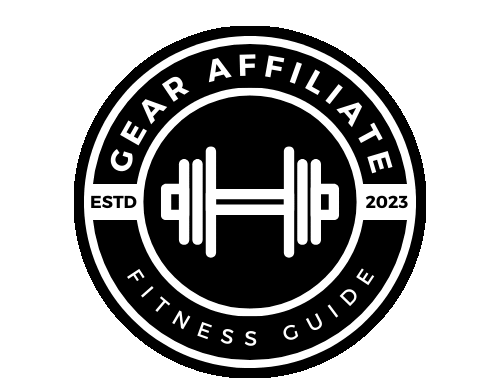- What Do Nitric Oxide Boosters Do?
- What Is Nitric Oxide (NO)?
- How Nitric Oxide Boosters Work
- Key Benefits of Nitric Oxide Boosters
- Top Ingredients That Actually Boost Nitric Oxide
- What Nitric Oxide Boosters Don’t Do
- Who Should Use Nitric Oxide Boosters
- Stacking Tip: Combine for Maximum Effect
- Possible Side Effects
- The Bottom Line
What Do Nitric Oxide Boosters Do?
Written by our supplement testing crew
Built for lifters, athletes, and anyone serious about what they put in their body—this guide is written by real coaches who prioritize performance over hype.
That skin-stretching pump you chase in the gym? Nitric oxide is at the center of it.
Whether you’re pushing for a new PR or grinding through volume sets, nitric oxide (NO) boosters can make a real difference. They’re not just about the pump — though that’s part of it. These supplements improve blood flow, endurance, and nutrient delivery, making your training more efficient and your recovery faster.
If you’ve ever wondered how pre-workouts create that “tight,” full-muscle feeling or why some lifters swear by nitric oxide stacks, here’s what’s really happening inside your body — and which ingredients actually make it work.
What Is Nitric Oxide (NO)?
Nitric oxide is a natural gas molecule produced by your body. It acts as a vasodilator, meaning it relaxes and widens blood vessels. When your blood vessels open up, blood flows more freely — carrying more oxygen, nutrients, and anabolic hormones to working muscles.
In simple terms:
More nitric oxide = better performance, bigger pumps, and faster recovery.\\
How Nitric Oxide Boosters Work
Nitric oxide boosters don’t contain nitric oxide directly. Instead, they provide precursor compounds that help your body produce more of it naturally.
The main pathways are:
- L-Arginine Pathway:
- Arginine converts directly into nitric oxide through an enzyme called nitric oxide synthase (NOS).
- This pathway can be limited by how well your gut absorbs arginine, which is why some formulas skip straight to citrulline (more on that below).
- L-Citrulline Pathway:
- Citrulline converts into arginine in your kidneys, which then increases nitric oxide production more effectively than arginine itself.
- That’s why L-Citrulline or Citrulline Malate are common in pre-workouts — they simply work better for lasting vasodilation and blood flow.
- Nitrate-Nitrite Pathway (from food sources):
- Found in beets, spinach, and arugula.
- These compounds convert into nitric oxide through the nitrate-nitrite-NO cycle — a non-enzymatic pathway that works even when oxygen is low, making it ideal for endurance athletes.
Key Benefits of Nitric Oxide Boosters
Let’s break down what lifters and athletes actually feel from proper NO supplementation.
1. Enhanced Muscle Pumps
That full, vascular, skin-tight feeling after training? That’s nitric oxide increasing blood volume inside your muscles.
Why it matters:
- Improved mind-muscle connection
- Better nutrient delivery to working tissue
- Temporary increase in muscle circumference and visual density
While the pump looks great, it’s also functional — it pushes more amino acids, glucose, and oxygen where they’re needed most.
2. Improved Endurance and Training Volume
Better blood flow means less fatigue and more reps. When oxygen and nutrients circulate efficiently, your muscles can sustain higher workloads before burning out.
You’ll notice:
- You can push deeper into high-rep sets
- Shorter rest times feel more manageable
- Your last reps stay cleaner and stronger
That’s why nitric oxide boosters are just as valuable for endurance athletes as they are for strength training — they improve total work output.
3. Faster Recovery Between Sets and Sessions
With improved circulation, waste products like lactic acid and ammonia clear faster. That reduces soreness and speeds up muscle recovery.
Over time, better nutrient flow also means more consistent protein synthesis and reduced muscular stress between training days.
4. Possible Blood Pressure and Heart Health Support
Beyond the gym, nitric oxide has been shown to support cardiovascular health by improving endothelial function (the lining of your blood vessels).
While most users take it for performance, it’s worth noting the long-term benefit of healthier circulation, especially if you’re training hard year-round.
Top Ingredients That Actually Boost Nitric Oxide
When scanning supplement labels, these are the ingredients that actually make a difference:
| Ingredient | Primary Function | Effective Dose |
|---|---|---|
| L-Citrulline / Citrulline Malate | Boosts arginine levels for stronger NO production | 6–8g (malate) pre-workout |
| L-Arginine | Converts directly into NO, but less bioavailable | 3–6g |
| Beet Root Extract (Nitrates) | Boosts NO via nitrate-nitrite pathway | 500–1000mg |
| Nitrosigine® (Arginine Silicate) | Patented form for sustained NO and mental focus | 1.5g |
| Agmatine Sulfate | Extends duration of nitric oxide in bloodstream | 500–1000mg |
A solid NO booster formula usually includes L-Citrulline + Agmatine or Beet Extract + Nitrosigine for the best of both worlds — sustained vascularity and improved endurance.
What Nitric Oxide Boosters Don’t Do
It’s easy to get lost in the hype. Here’s what NO boosters won’t do:
- They don’t directly build muscle — they enhance the environment for it.
- They don’t replace creatine or protein — you still need those for strength and recovery.
- They don’t provide the stimulant effect of caffeine — they’re not “energy” supplements, even if they improve performance indirectly.
Think of nitric oxide boosters as amplifiers: they enhance your existing training and nutrition foundation.
Who Should Use Nitric Oxide Boosters
These supplements work best for:
- Lifters chasing pump and muscle fullness
- Athletes who train for volume or endurance
- Individuals who stack them with pre-workouts or creatine
- Those looking to improve vascularity and recovery time
They’re safe for most healthy adults and pair extremely well with creatine, BCAAs, or pre-workouts (especially stim-free options for late-night training).
Stacking Tip: Combine for Maximum Effect
For best results, stack like this:
- Pre-workout:
- 6–8g L-Citrulline Malate
- 1g Agmatine Sulfate
- 500mg Beet Root Extract
- With Creatine:
- Helps shuttle creatine more efficiently to working muscles.
- With Electrolytes:
- Improves muscle contraction and hydration as blood flow increases.
You can use NO boosters daily or pre-training only, depending on your recovery and training frequency.
And if you need some supplement stack ideas, check out our post on just that here.
Possible Side Effects
Nitric oxide boosters are generally safe, but a few things to watch for:
- Mild headaches or lightheadedness if you overdo the dose (too much vasodilation).
- Temporary flushing or tingling (from citrulline or beta-alanine blends).
- Lower blood pressure — avoid stacking with medications or excessive caffeine.
Start with half a dose if you’re new to them, and adjust gradually.
The Bottom Line
Nitric oxide boosters aren’t magic — but they do make training feel different. You’ll notice fuller pumps, more endurance, and smoother recovery. They’re especially valuable if you train hard, chase hypertrophy, or want to stay in the gym longer without gassing out.
If you’ve never tried one, start with Snap Supplements Nitic oxide booster.
Snap Supplements Nitric Oxide Booster
Snap Supplements Nitric Oxide Booster Supplement with L Arginine and L Citrulline Essential Amino Acids and Ginseng Root, Energy, Heart Health, Muscle Growth & Circulation Support, 60 Capsules
Used consistently, nitric oxide boosters make your workouts feel stronger, your muscles look fuller, and your post-lift recovery faster.
And if you need some supplement stack ideas, check out our post on just that here.
If you found this post to be helpful, then you may be interested in the rest of our blog page here.
Discover more from GearAffiliate
Subscribe to get the latest posts sent to your email.



